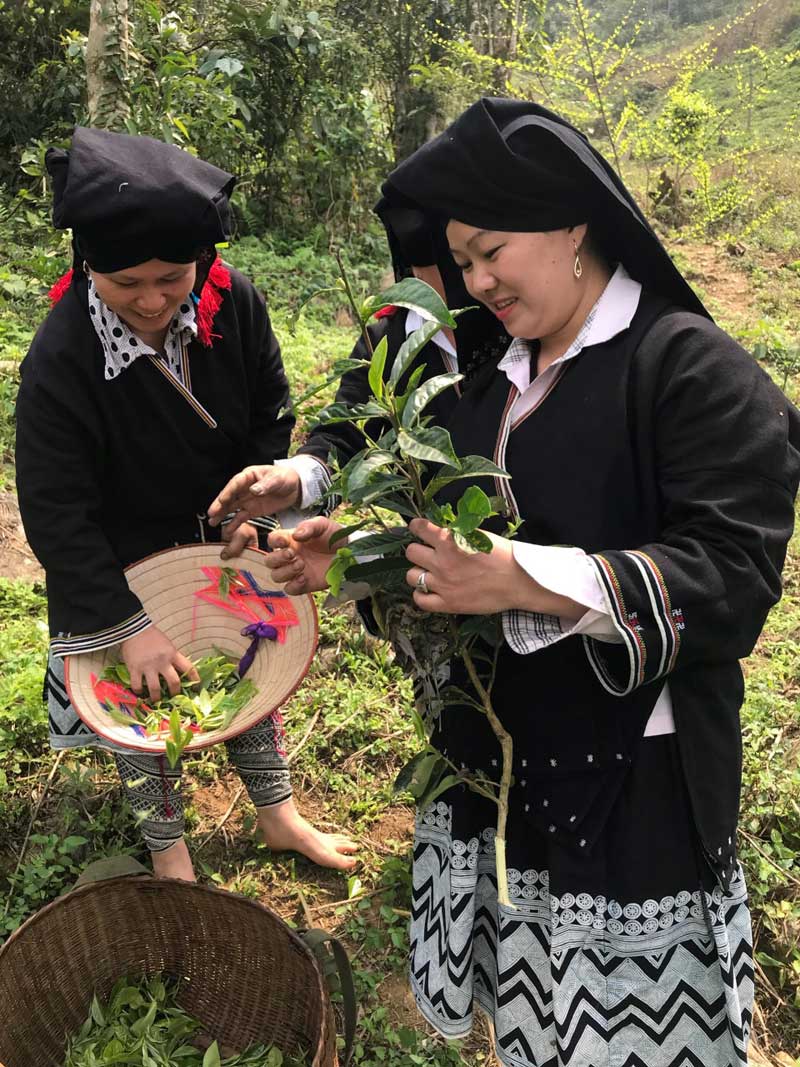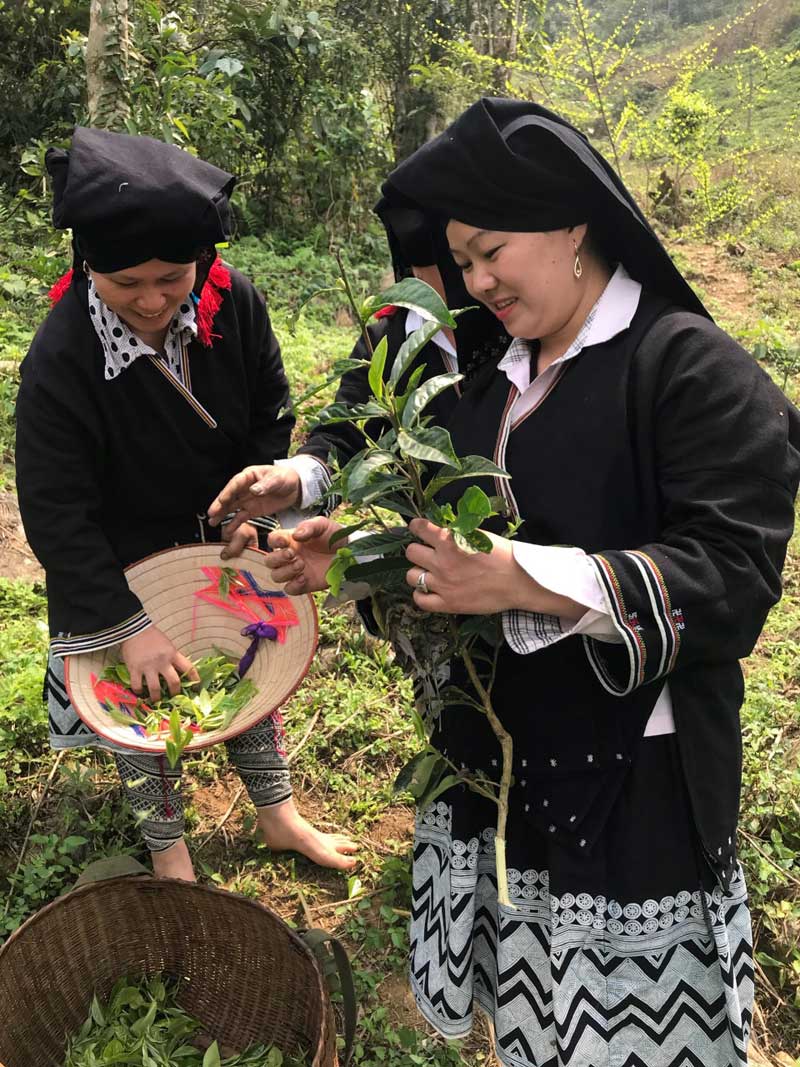
HBO - This season, when travelling to Sung village, Cao Son commune, Da Bac district you can enjoy not only the flavor of Camellia Sinensis (Shan Tuyet tea), but you also can see warm smiles in the small village under the forest canopy. The ancient Camellia Sinensis is becoming a specialty - a gift that anyone coming to Sung village also wants to bring home.
Women in Sung village, Cao Son commune, Da Bac district pick Shan Tuyet tea.
In the 60s and 70s of the last century, when not damming the river to build Hoa Binh Hydropower Plant, Sung village used to be the highest point of Da Bac district with people living there. Mr. Khuong Manh Thu, the secretary of the commune’s Party Committee says that Sung village still preserves the intact traditional cultural identity of Dao ethnic people for hundreds of years.
This cultural identity is not only preserved, but it is also being promoted in a positive and effective way in building a new cultural life. To promote this advantage, the commune has also developed and issued the Resolution No. 02/NQ-DU on "The development of the community tourism in Sung village". Up till now, it has been considered as a breakthrough step, contributing to improving people's lives there.
Currently, there are 75 houses with 364 people in the whole village. In particular, some households do "homestay" travel services such as the families of Ly Van Thu, Dang Van Xuan, Dang Van Nhat and so on. However, you can come and stay at anyone's house. You are also welcomed with sincerity and openness anywhere. As we are in the forest so it is very happy to welcome the guest.
Returning to Sung village, tourists can enjoy ancient Camellia Sinensis, the traditional dishes such as sour meat, hilly chicken, Hoang wine, upland rice and so on. These products are made by the people themselves, so they always keep the purity and the sweet. Tourists can also visit and admire the beauty of a picture of a wild mountain forest with the green rice in the terraced fields. After the harvest, these fields are brightly yellow with beautiful flowers of Brassica napus.
Here, the tradition of maintaining forests around the villages and communes has been maintained from the time of the ancestors. As a result of this, there have been hundreds of year-old precious timber trees such as Parashorea chinensis with the diameter of more than 2 meters in the head of the commune or Syzygium aromaticum and Cassia alata trees, which is as big as 1 - 2 hugs of adults ... The whole forest around the village has never been abused for hundreds of years.
Thanks to the forests, Sung village has become an attractive destination and community tourism on the tourist map of the province. That is evidenced by hundreds of turns of domestic and foreign visitors every month. In particular, they are mainly foreign guests.
Located just a 20-minute drive from Hoa Binh City, Ora Hill Farmstay & Glamping Hoa Binh is a captivating new destination nestled in Mo hamlet, Bình Thanh commune, Cao Phong district. Combining farming with leisure, this tranquil retreat is perfect for those seeking balance, joy, and an immersive experience in the expansive beauty of nature.
Muong Bi - Tan Lac is renowned as one of the four famous Muong regions in Hoa Binh province. Blessed by nature with a favourable climate and stunning landscapes, Tan Lac holds great advantages for tourism development. The local tourism industry has made remarkable strides in recent times thanks to the attention and support from the local authorities and sectors.
With its strategic location, well-developed transport network, and diverse soil and climatic conditions, Hoa Binh is emerging as a must-visit destination in Vietnam's northwestern tourism corridor. The province boasts numerous attractions, including the Kim Boi hot springs (Kim Boi district), the Dau Rong cave complex (Cao Phong), the Mai Chau valley (Mai Chau), and the iconic Hoa Binh hydropower plant.
The northern mountainous province of Hoa Binh has been listed among the 71 most beautiful places to visit worldwide by the prestigious US travel magazine Condé Nast Traveller.
Hoa Binh province’s rich natural and cultural resources position it as a prime location for developing community-based tourism (CBT). In recent years, support from central and provincial policies, as well as assistance from non-governmental organisations, have encouraged local ethnic minority and mountainous communities to actively engage in the sector.



